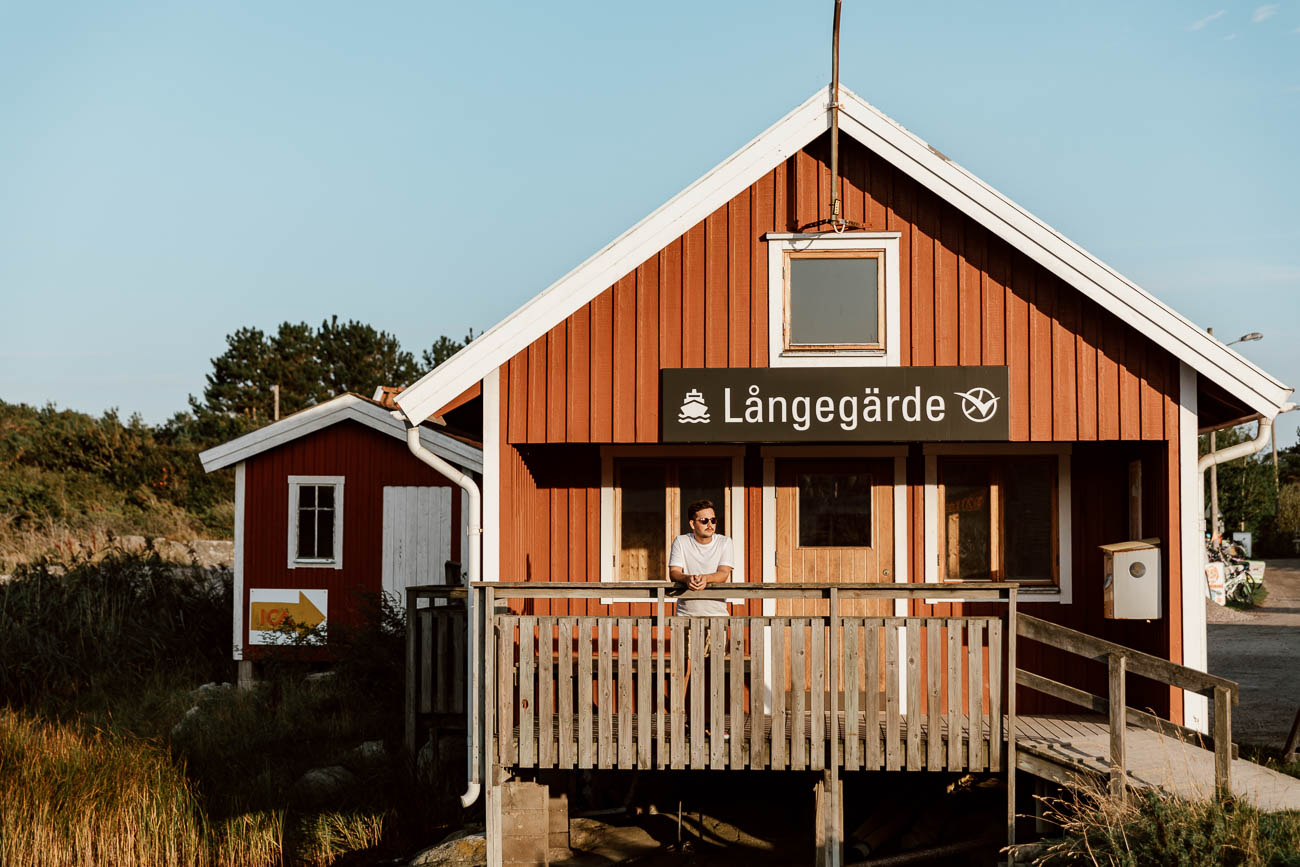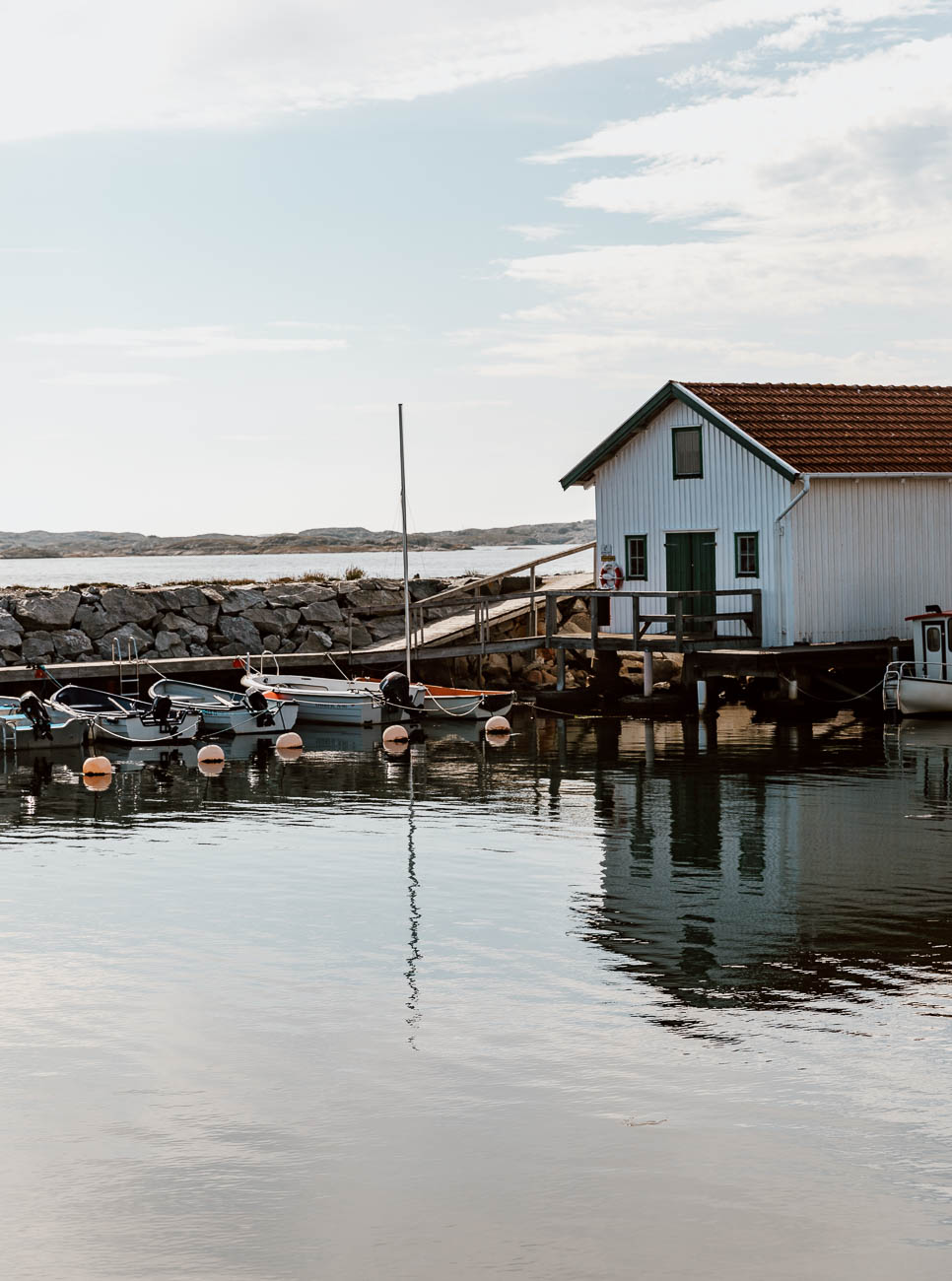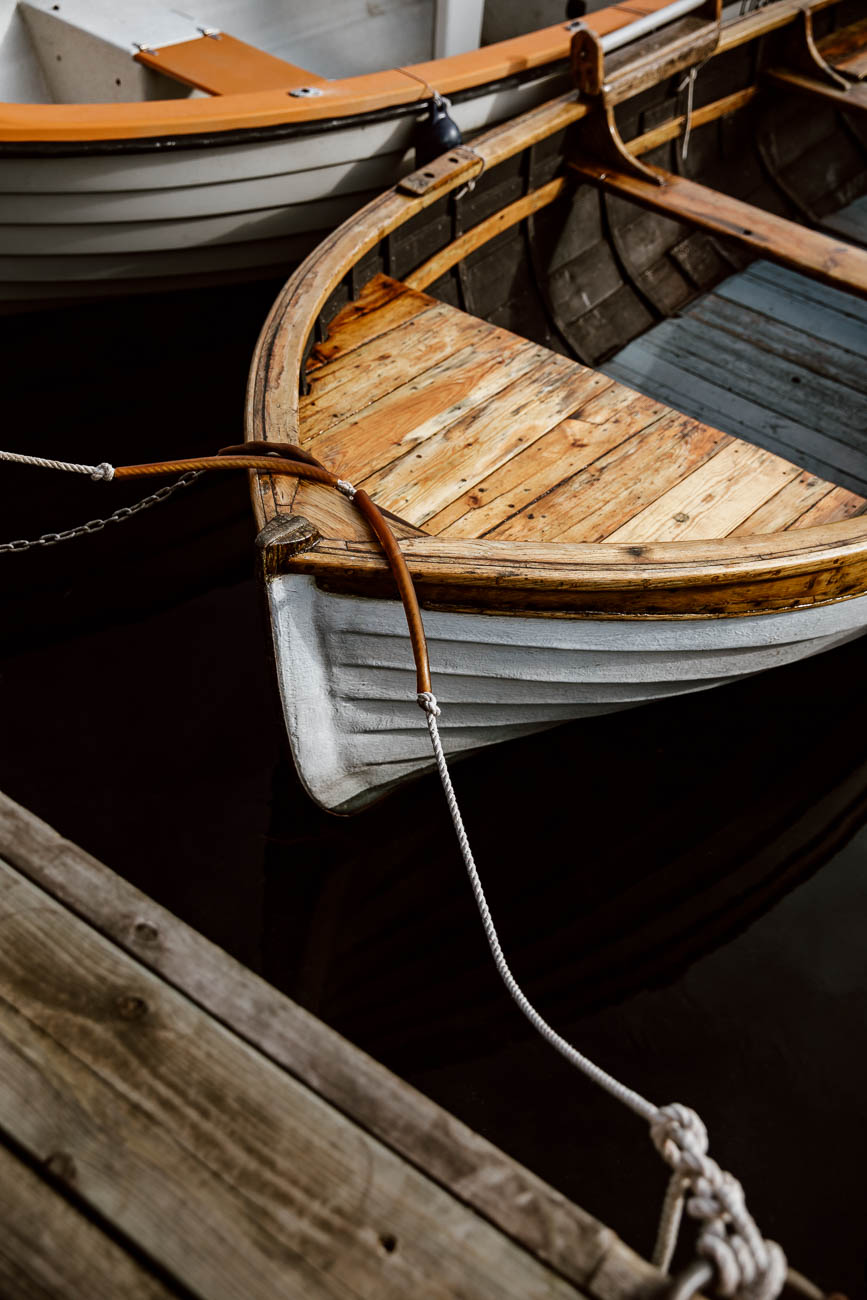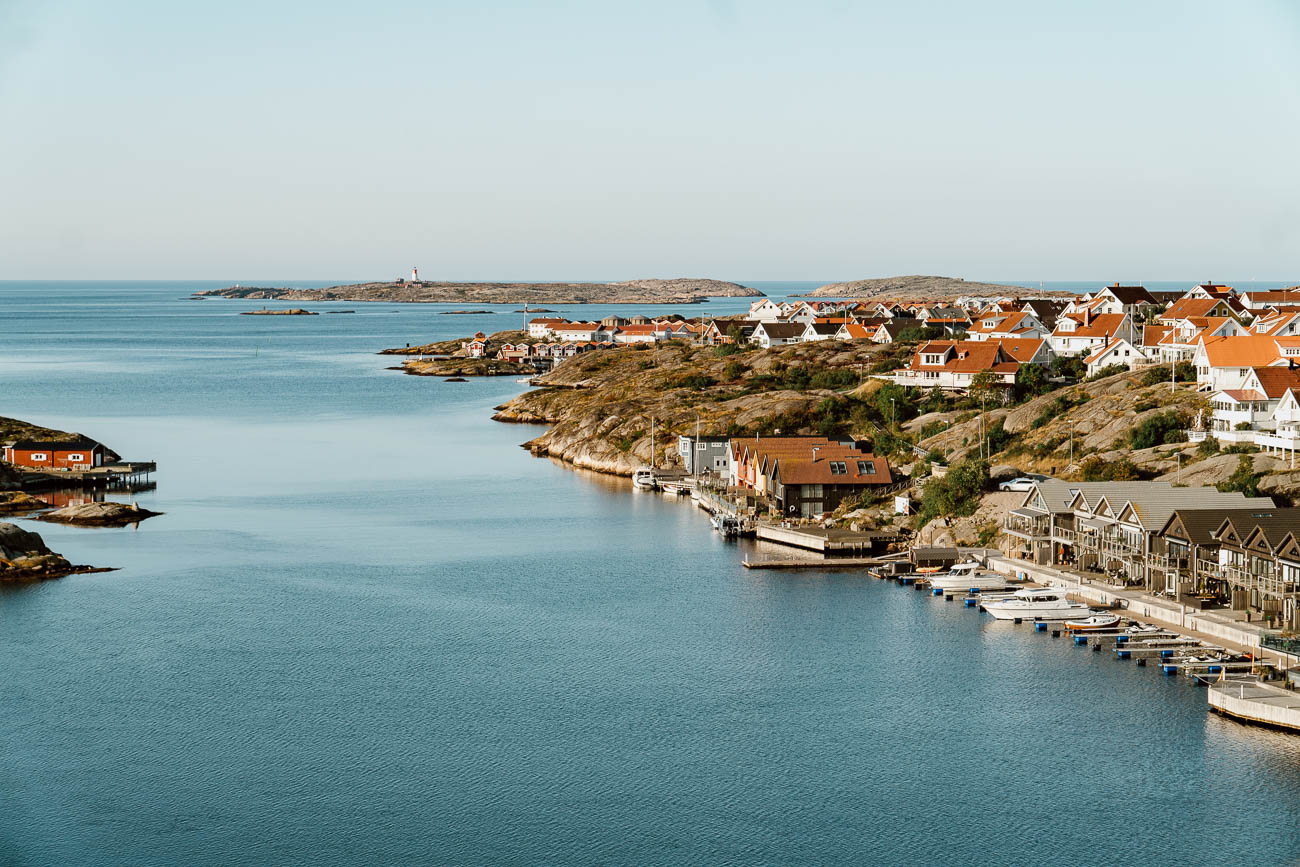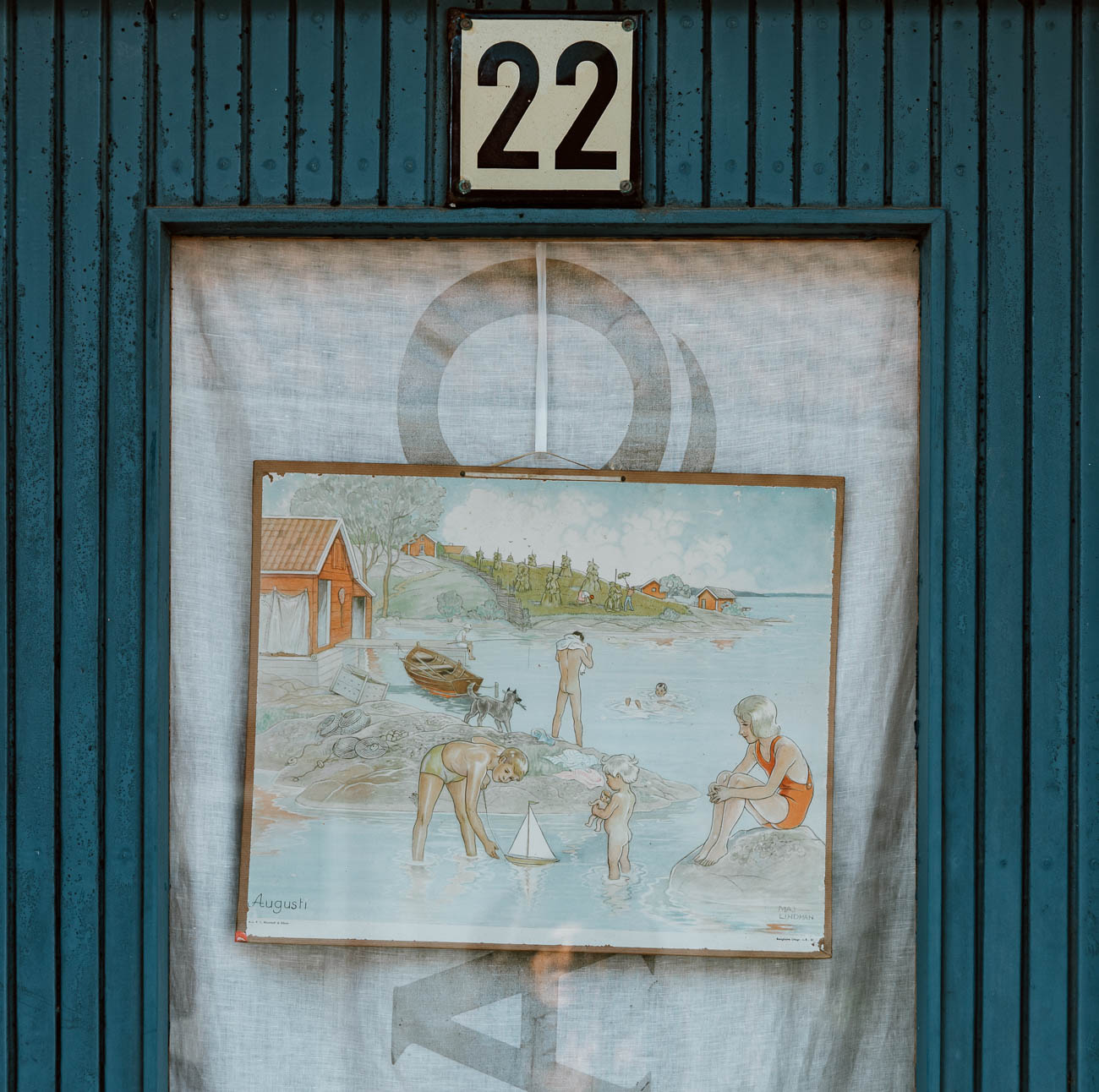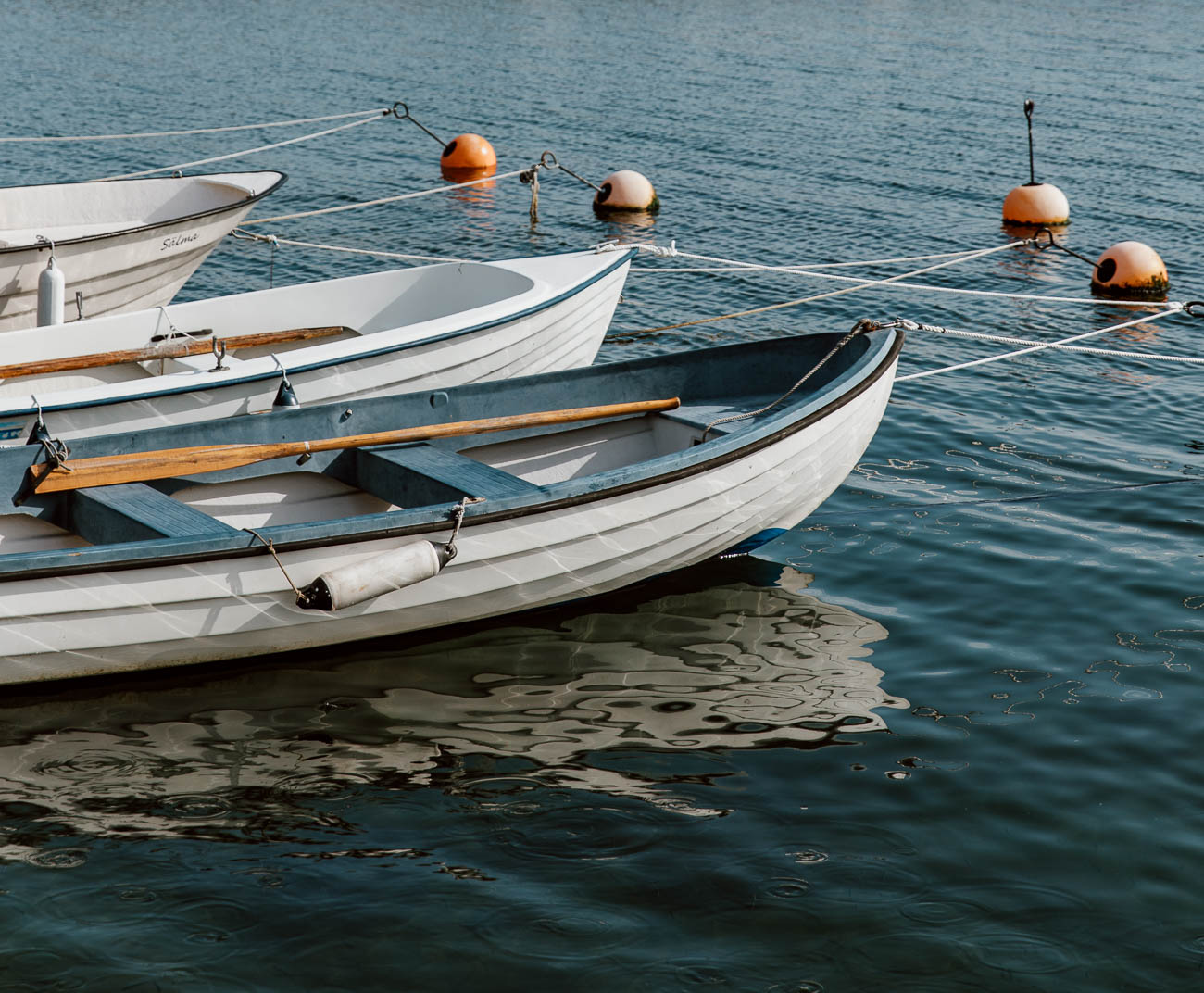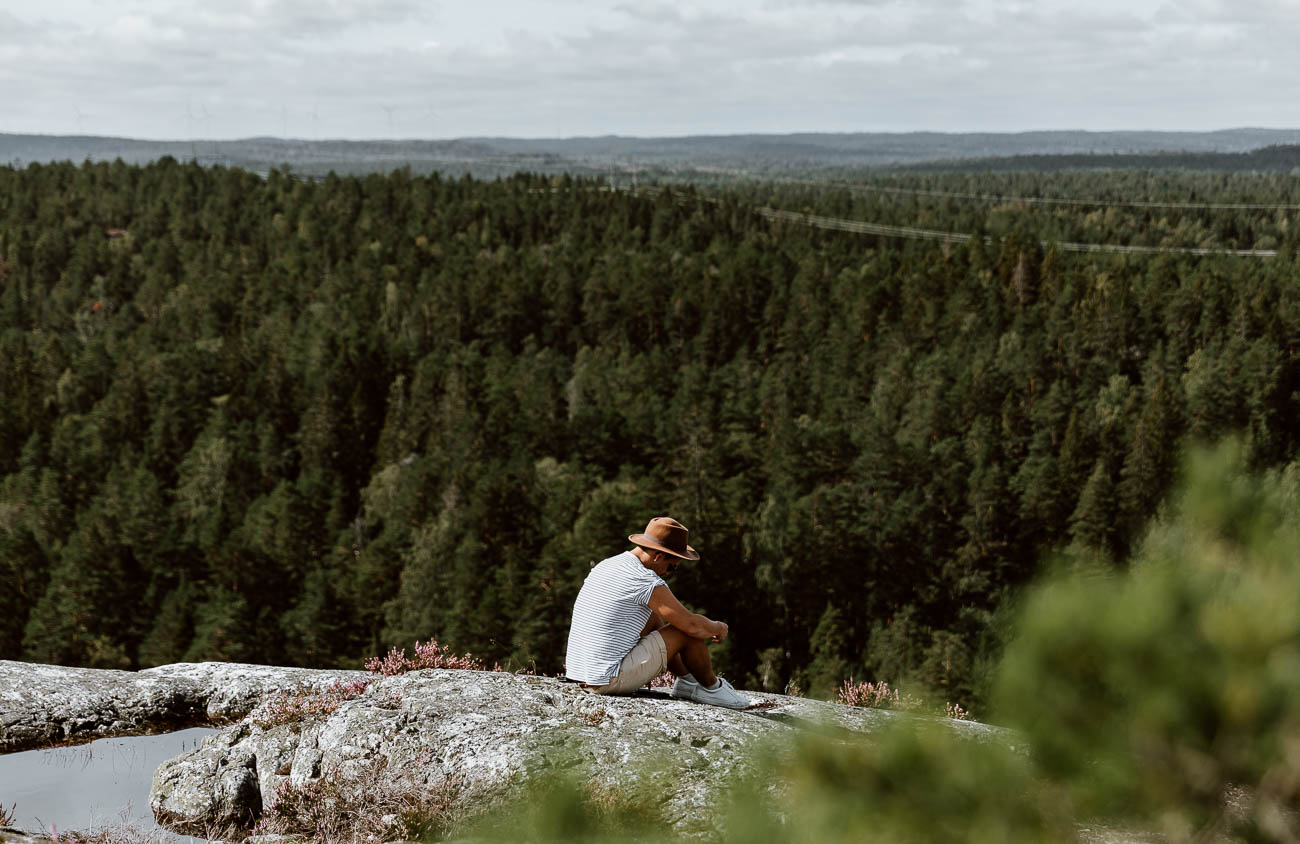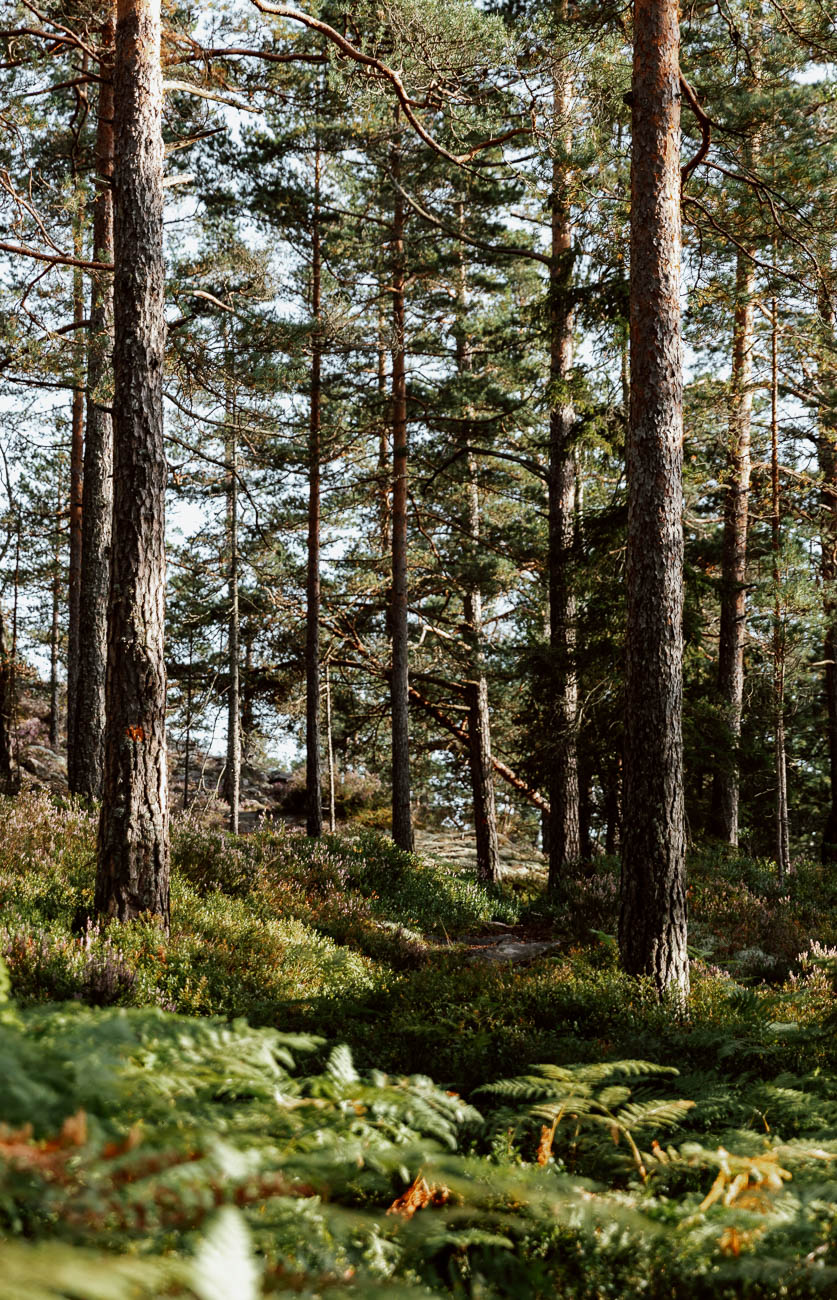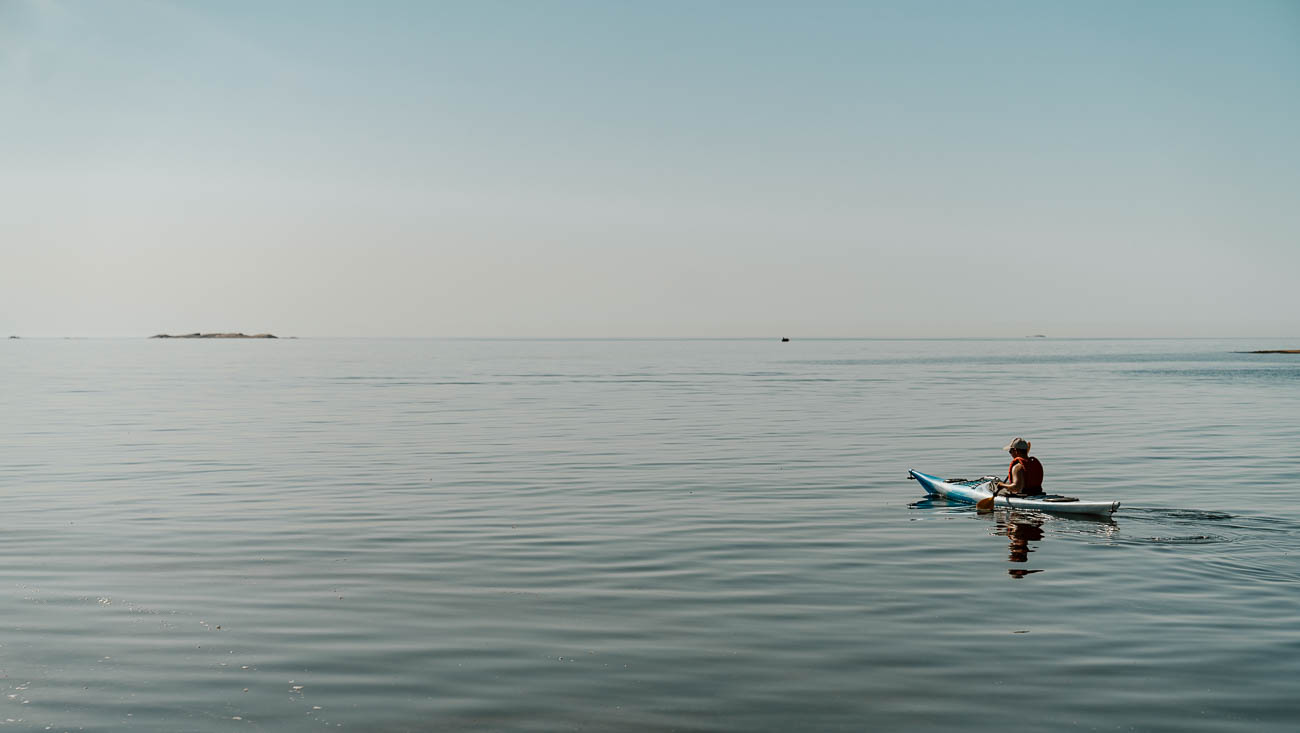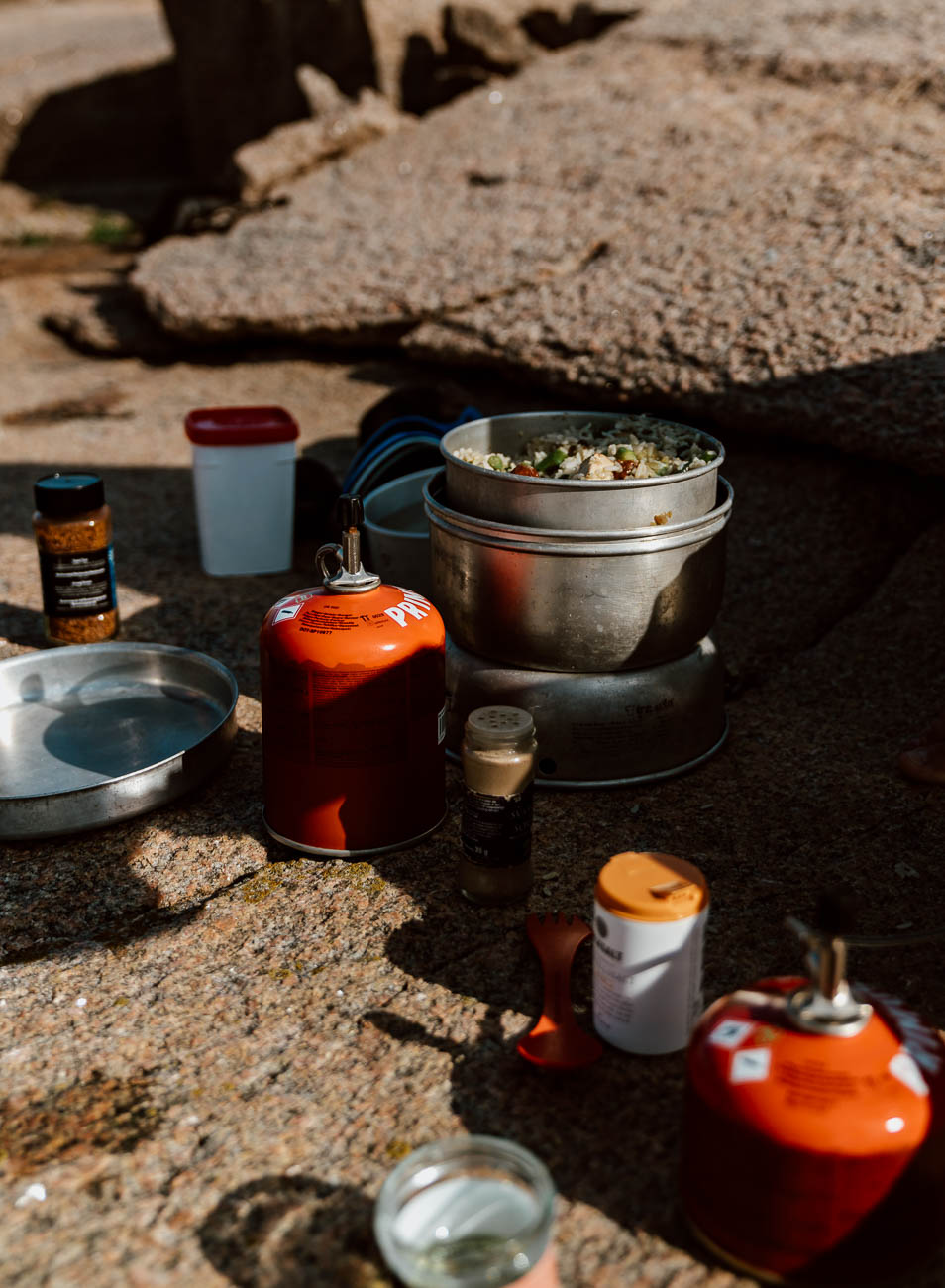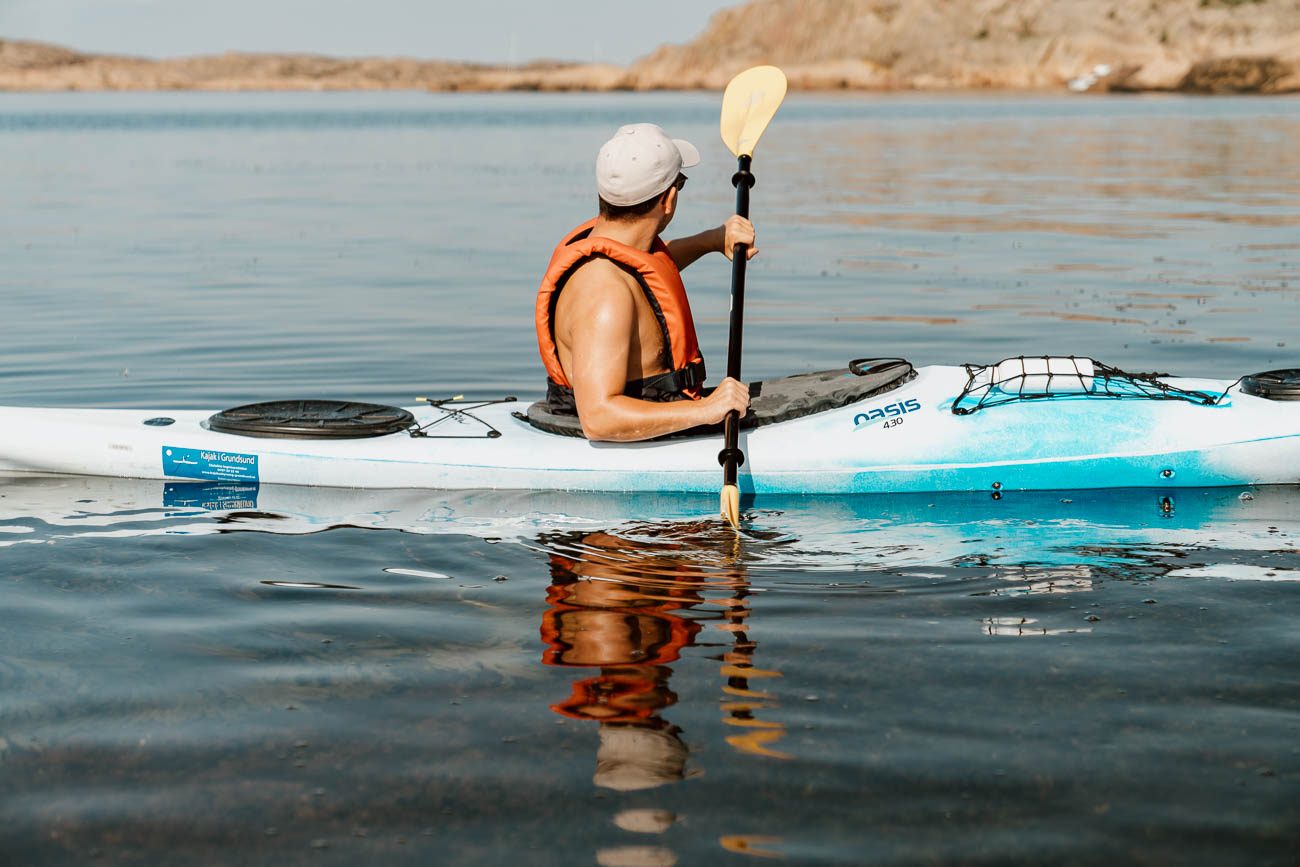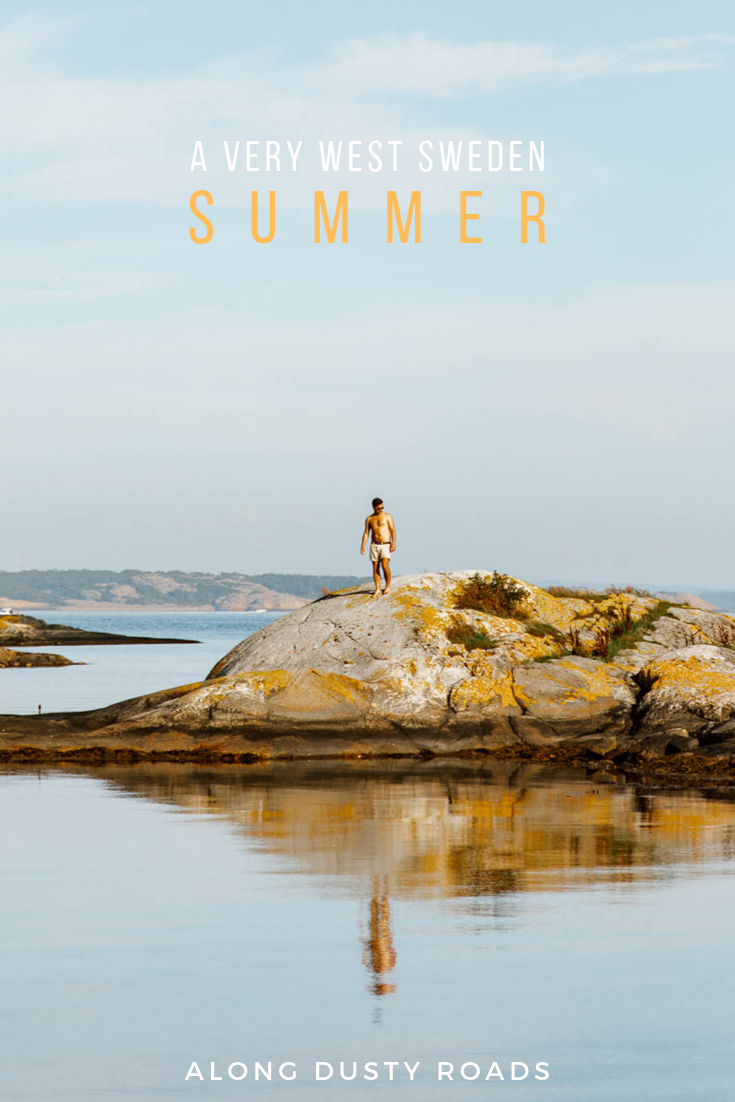There are no traffic jams on South Koster.
This tiny island in the North Sea - home to some sheep, a single shop, and 300 or so permanent residents - is as close to car free as a place can be. Residents, and the hundreds of visiting Swedes on summer holiday, instead cycle slowly to and from their homes and their harbours. A few take golf carts. Others get around exclusively by boat.
After our arrival on the daily ferry heading west from Stromstad, we opted for two silver and black bikes with temporary baskets, rented from a wild-haired Spaniard who also spends his summers here. There is, he told us in his personal interpretation of the laws of supply and demand, much more money to be made on a carless island from renting bicycles than cooking in a restaurant kitchen.
Later, in the early evening, our rented wheels took us along a sun-specked road towards the last ferry and first sunset at the harbour. On the tarmac leading to the sea, we zig-zagged, rode side-by-side and hand-in-hand, attempted wheelies, and raised our arms above our heads until we veered too far to the edge and almost fell. We took the single slight decline on the island at full pelt, racing a race where nobody cared about the result and no one was watching.
It was a nostalgic return to those carefree summer days of decades ago, when bikes would take us everywhere, and all we had to worry about was what time to be home for dinner and to ensure knees didn’t become too scraped or muddied.
When time moved more slowly.
Although we were five days deep into our trip around West Sweden, this idyll of long wholesome summer days and nights, it wasn't the first or the last time an air of childlike innocence and unadulterated joy at simple pleasures in the golden sunlight would find us.
West Sweden is shaped by water.
There are the thousands of rocky islands and islets which run scattergun up the west coast from Gothenburg to the Norwegian border to the north, haphazardly arranged like a giant's pebble collection cast astray. There's the plethora of lakes, waterways, and rivers which pockmark and puncture the countryside of Dalsland, the Swedish Lake District. And any conversation with a local about the region's history will usually arrive at a discussion about the half-century long 'herring periods' of old, when the sea vibrated with millions of silver fish and Swedes moved to the sparsely populated outcrops in the hope of plundering a fortune from the deep.
A maritime culture and aesthetic infused every nook and cranny of the West Sweden we visited. Working boats and pleasure yachts docked together in the colourful harbour of Smögen, freshly-caught seasonal seafood was the beginning and middle of most menus, and delightfully rickety rust-red wooden boathouses with doors open to the water formed the social hub for groups of friends and families.
But today, instead of herring hauls and fishing fortunes, it is tourism which causes the coastal towns and island communities to swell, as those from the cities head west to perform the rituals of summer which Swedes take very seriously.
Very seriously indeed.
Perhaps it shouldn't come as a surprise, in a country where winters are long and cloaked with little light, that it's a national pastime to make the most of each glorious summer. It's as near to sacrosanct as the fika break, flat-pack furniture, and flawless interior design.
There's even a law to protect the traditions of a Swedish summer. In the early 20th century, unions negotiated the 'industrisemester' (industry holiday), a three to four-week period in July where factories and other workplaces would halt production; most of Sweden continues to be on holiday every July. And, from their already generous annual holiday allowance, most employees will lump their days off into a three of four week bloc to be enjoyed consecutively in summer. A employee can actually only legally be refused the chance to take four consecutive weeks off between May and September due to exceptional circumstances!
And so, when winter has thawed, the light is abundant, and the harvest is on the horizon, a lot of Sweden head west.
West towards the islands, the many lakes or therapeutic glass cabins of Dalsland, the archipelagos, or picturesque traditional fishing villages like Smögen, Grundsund and Fiskebäckskil with their red, yellow, blue, and white wooden houses and pretty streets.
And in this mass migration, there is intent and tradition.
It is to make the most of nature and to savour its vivid colour palette in bloom. To be active and purposeful. It is to be out on the water, camping in the forest, fishing or foraging the fruits and tastes of the season, walking a trail far which takes your far above the treeline, starting the morning with a brisk early morning wild swim and ending it awake with friends until the last golden light fades.
Summer in West Sweden is to be outside.
It is to be embraced.
We explained our impressions to Clara, our long-limbed kayaking guide, as she led us on a weave and glide through the salmon-pink granite rocks and islands which form the famous Bohuslän archipelago. Composed of 8,000 or so islands, islets, and inlets, the archipelago is a haven for the sort of water-faring activities which all Swedes seem born to do so effortlessly.
She told us that, in Grundsund, the population jumps from a few hundred residents in winter to around 3,000 each July. It comes alive in summer. The archipelago is however vast enough for everyone to find their own slice of solitude, and going on a multiday kayak and camping trip is an increasingly popular way to immerse oneself in the natural environment (not too infrequently in the nude, based on what we saw from our vantage point in the water).
To disconnect and reconnect.
That afternoon, we pulled our kayaks from the sea and Clara cooked us generous portions of rice, tofu, and vegetable over an open flame. We sat together in a semi-circle on one of the many thousands of rocks, and ate from plastic bowls. The sun was on our backs and fluorescent jelly fish danced in the water below. Across the blue, two women were sunbathing in silence on their own smooth outcrop, their small engine boat parked up and bobbing. On another, white smoke spiralled its way towards the cloudless sky from a barbecue. Boats came and went in the invisible maritime alley.
We could have stayed there until the moon arrived.
Summer in West Sweden is to feel like a kid again, savouring every moment of that long, hot summer spent outside.
On our final morning, freshly changed from one last refreshing dive off a jetty and into the water, we left Fiskebäckskil, the islands, and the archipelago behind us. We crossed bridges and rejoined the highway, where the green and white signs counted down the miles to Gothenburg airport.
Nature receded in the wing mirror, and grey blocks of buildings returned as the wheels turned. Our time was drawing to a close, and a new city in another country was awaiting.
A return to responsibilities and screens.
We drove on, hoping that the fresh stillness of that West Sweden summer would stay with us beyond the next day's setting sun. That our renewed bonds with the flows and freedoms of nature would remain as strong as an old fisherman's rope.
And that these new adulthood memories of an unexpected carefree childhood summer would fade away slowly, like the last light of that long Swedish summer night by the water.
There's a reason why many Swedes choose to go nowhere but west come summertime.
We visited West Sweden in partnership with Visit Sweden, and you can read our full road trip itinerary here.
To find out more about travel in the region, check out this article on the Visit Sweden website.

